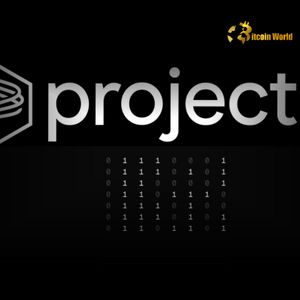JPMorgan: Dimon’s Crypto U-Turn, GENIUS Act On Deck
7 min read
Summary JPMorgan’s JPMD stablecoin on Coinbase’s Base blockchain could revolutionize dollar digitization and boost deposit growth. Jamie Dimon shifted from crypto skeptic to pioneer, positioning JPMorgan as a first mover in stablecoins. Stablecoins may enable foreign investors to enter dollars, expanding JP Morgan’s global client base. Dimon’s eventual retirement poses the biggest risk to JPMorgan’s sustained premium valuation and growth momentum. The “Genius” Act JP Morgan Chase & Co (NYSE: JPM ), is a stock I own but have yet to cover by itself. I’ve only evaluated the stock when comparing other bank stocks I own up against the other US-based “SIB” (systematically important banks), JP Morgan always pencils out at a premium to the others in the models I use. The bank, however, has some important catalysts lined up, including crypto-stable coins. The new coin, JPMD will build on what JPM coin originally brought to their institutional consumers and allow the general retail population access to their dollar-backed stable coin. CEO Jamie Dimon has kind of done a complete 180 from his initial stance on crypto . He was not a fan at the outset, and stablecoins, to be fair, are not an alternative currency type asset like Bitcoin. Rather, this is a US dollar-backed asset to help digitize the dollar and may in essence further ingrain the US Dollar as the reserve currency of the world. Things are moving fast : JP Morgan Chase & Co. unveiled its plans to debut a so-called deposit token, JPMD, on Tuesday, just one day after a social media post ignited widespread speculation about the digital asset. The U.S. investment bank is expected to transfer an undisclosed amount of JPMD to cryptocurrency exchange Coinbase in the coming days, Naveen Mallela, global co-head of JP Morgan’s blockchain unit Kinexys, said Tuesday in an interview with Bloomberg News. The bank will issue its deposit token on Base, an Ethereum layer-2 blockchain launched by Coinbase. The transfer will be denominated in U.S. dollars. The JPMD coin has been under development since 2023 . The release timing is ideal as it coincides with new US congressional acts surrounding stablecoins. Here are the details: Known as the GENIUS Act, the bill would establish guardrails and consumer protections for stablecoins, a type of cryptocurrency typically pegged to the U.S. dollar. The acronym stands for “Guiding and Establishing National Innovation for U.S. Stablecoins. In addition to banks like JP Morgan, crypto exchanges like Coinbase ( COIN ) are sure to benefit. Let’s explore how big of a catalyst this might be. Enhancing the balance sheet The question here in functionality is this, if JP Morgan issues these coins and the buyers use dollars to purchase, will JP Morgan control the reserves and earn interest on the reserves until the cash is needed to be redeemed for another transaction? I would say this is a likely scenario, and the first order of benefit here is creating an even larger deposit base through external sources, like Coinbase. This could really be a growth driver for net interest income. Pulling new clients into the JP Morgan ecosystem If a platform gets new clients used to transact with JPMD, this could be a springboard to cross-sell other products. This could crack the door open to lots of growth possibilities. Again, JPM coin [the JP Morgan crypto iteration for institutional clients], handled on-chain transfers, basically a faster way of wiring money using stablecoins within the JP Morgan banking system. JPMD will aim to expand this storage and transfer functionality to a multi-bank, multi-crypto exchange system. Transaction fees? Still no clarity on transaction fees. While tether seems to have some transaction fees built in behind the scenes, companies like Circle ( CRCL ) with their USDC ( USDC-USD ) stablecoin, just make money on the net interest income. Foreign exchange This, in my opinion, is the big enchilada. Having worked overseas with foreign investors in China, India, the UAE, etc.,… I know their appetites for US Dollars are very large. This was one of the primary roadblocks in fact for foreign investors making any investment abroad, currency controls. We’re not used to it here, but many countries have foreign currency controls that disallow individuals to wire outside of their countries X amount of dollars per annum. Here are some examples I know of: China: $50,000/ year/person Nigeria: Very difficult/restricted to government approvals India: $250,000/year Some of the reason is to prevent capital flight. The other reason is the countries themselves lack US Dollar reserves, which the countries may need for trade. They don’t want the wealthy population burning through bank reserves of dollars to buy yachts in Miami. Stablecoins are changing the game if they can be accessed anywhere via local crypto exchanges. Singapore, Dubai, and Hong Kong are three popular places for the wealthy to bank in dollars and move money quickly. This stablecoin act may wreak havoc on their banking systems. Switzerland may see some demand drop as well. While foreign crypto exchanges would seem to have to get “white listed” with JP Morgan, I can foresee a flood of applications from foreign exchanges in the pipeline. While the workarounds are not 100% clear right now, I would imagine that everyone is trying to figure it out. USDC, for instance, is accessible on Binance and Kucoin in India from my understanding. Others have laid the groundwork, so JP Morgan can now come in and possibly dominate. The main catalyst to focus on here is JPMD could open up multi-bank and cross-border transactions, a whole new market of quasi-deposits. This is also different than JP Morgan’s Kinexys which was simply able to move information on the blockchain. JPMD is designed to move money. Valuation Now that we got this big catalyst out of the way, which, I believe, will have a multi-trillion dollar TAM in terms of new dollar-backed crypto deposits, largely from international inflows, let’s look at the valuation. The Graham Number as laid out in the Intelligent Investor is my go-to model for banks. This is the sector that normally has the most reasonable valuations for both earnings and book value, the two key components of the Graham Number. In his book, Graham says an investor should not pay more than the product equivalent of 22.5 when multiplying the P/E ratio X the P/B ratio. You can create a price model by using the following: GRAHAM NUMBER [SQRT 22.5 X EPS X BV]. STOCK FWD 2026 EPS TTM BV GRAHAM NUMBER [SQRT 22.5 X EPS X BV] JP MORGAN 19.51 119.24 228.78 Current discount/premium to Graham Number= 117% of intrinsic value. Compared to the other big retail banks STOCK FWD EPS Estimate TTM BV GRAHAM NUMBER [SQRT 22.5 X EPS X BV] current price JP MORGAN 19.51 119.24 228.78 269.52 CITI ( C ) 9.3 103.9 147.44 77.36 Bank Of ( BAC ) America 4.23 36.39 58.85 44.23 Wells Fargo ( WFC ) 6.56 49.82 85.75 72.5 As we can see, JP Morgan is the only one of these “SIB” banks to trade at a significant premium to its Graham Number. Does JP Morgan deserve the valuation premium? Data by YCharts The first reason for the premium is the bank’s EPS growth. Over the last decade, JP Morgan has outpaced the other 3 in this group by a lot. This is a combination of great balance sheet management, avoiding excessive bad loans, and buying back shares. Data by YCharts The return on equity for JP Morgan has also remained well ahead of these other banks, having really taken the lead once Wells Fargo became constrained under the draconian asset cap. Does the Genius Act and JPMD give JP Morgan an edge? In summary, the only reason I would want to own a bank like JP Morgan at such a premium to the others is that it has the following: A superior balance sheet Higher than average/leading EPS growth for its sector Higher than average/leading ROE A new growth catalyst JP Morgan checks all of these boxes. They are expensive, but the premium is warranted. Furthermore, JP Morgan and Goldman Sachs ( GS ) are probably the two most well-known US financial institutions abroad from my experience working with investors. Even though all of the banks can offer stable coins, investors will gravitate to those that are the most household names. I think JP Morgan has brand equity worldwide. Risks To me, the biggest risk with JP Morgan is what happens when CEO Jamie Dimon retires. He said he still has a lot more in the tank : JPMorgan CEO Jamie Dimon said his gig isn’t up at America’s largest bank on Monday, insisting in an exclusive interview with Fox Business that his retirement is “ several years away. ” The bank’s succession planning has been under scrutiny on Wall Street in recent months as Dimon approaches two decades in the top job. “Obviously, it’s always up to God and the board,” the 69-year-old told Maria Bartiromo. At 69, Dimon may be eyeballing retirement at least by the end of this decade, if not sooner. Dimon is one of the best CEOs that the United States has to offer. Losing him would chip away at the premium the bank receives in my opinion. Parting thoughts While JP Morgan is not a strong buy here, it is buyable at this premium due to management and stable coin catalysts.

Source: Seeking Alpha


